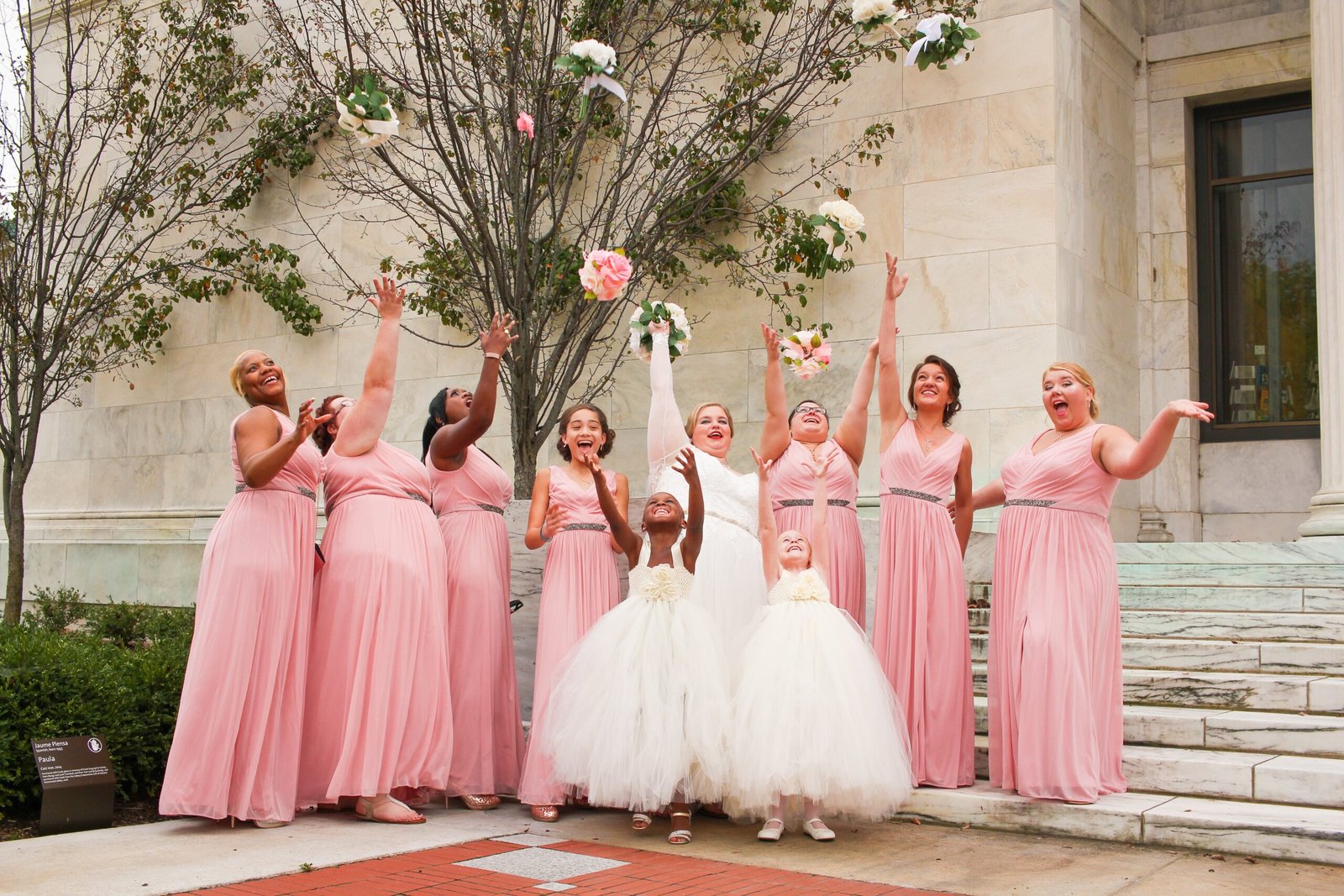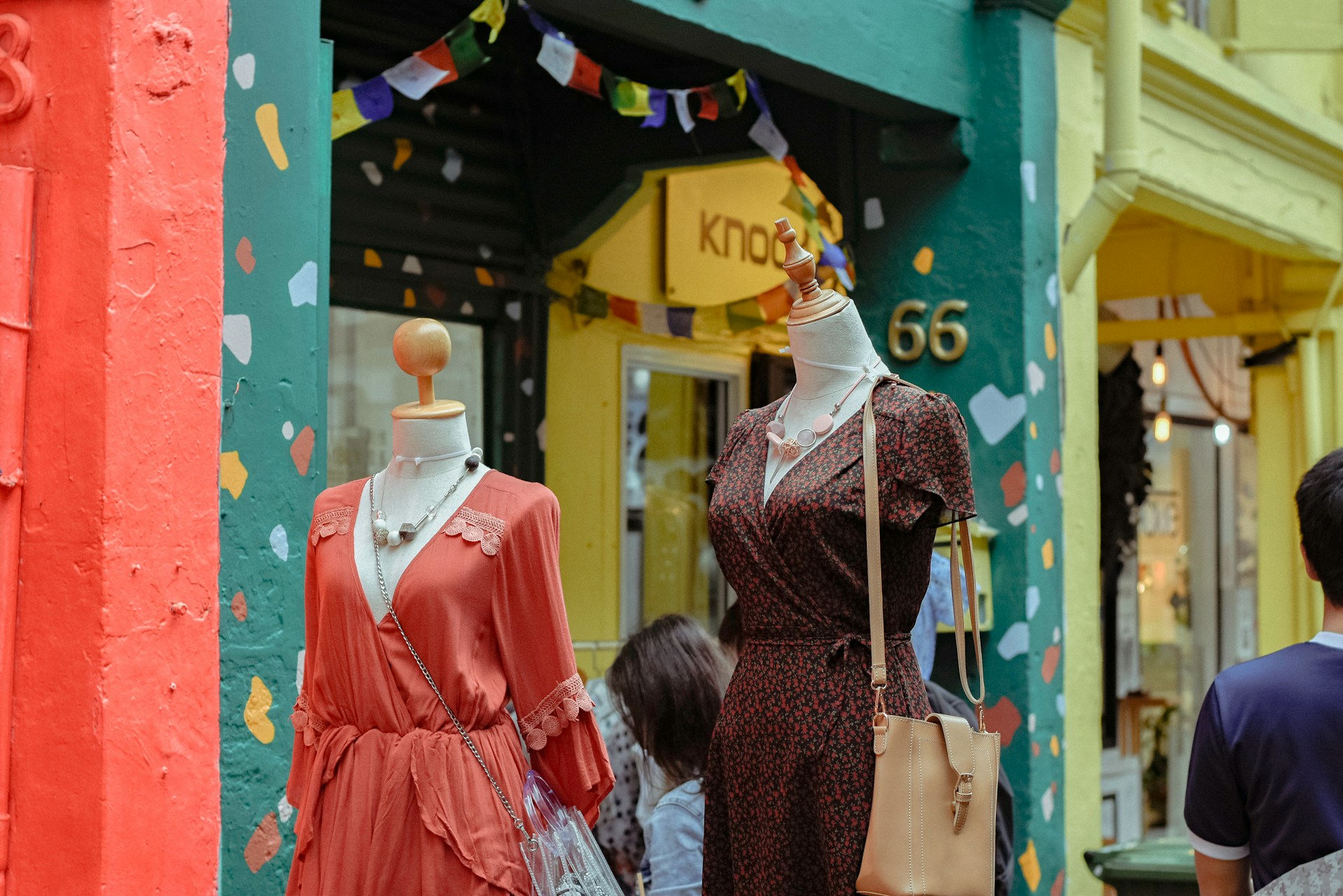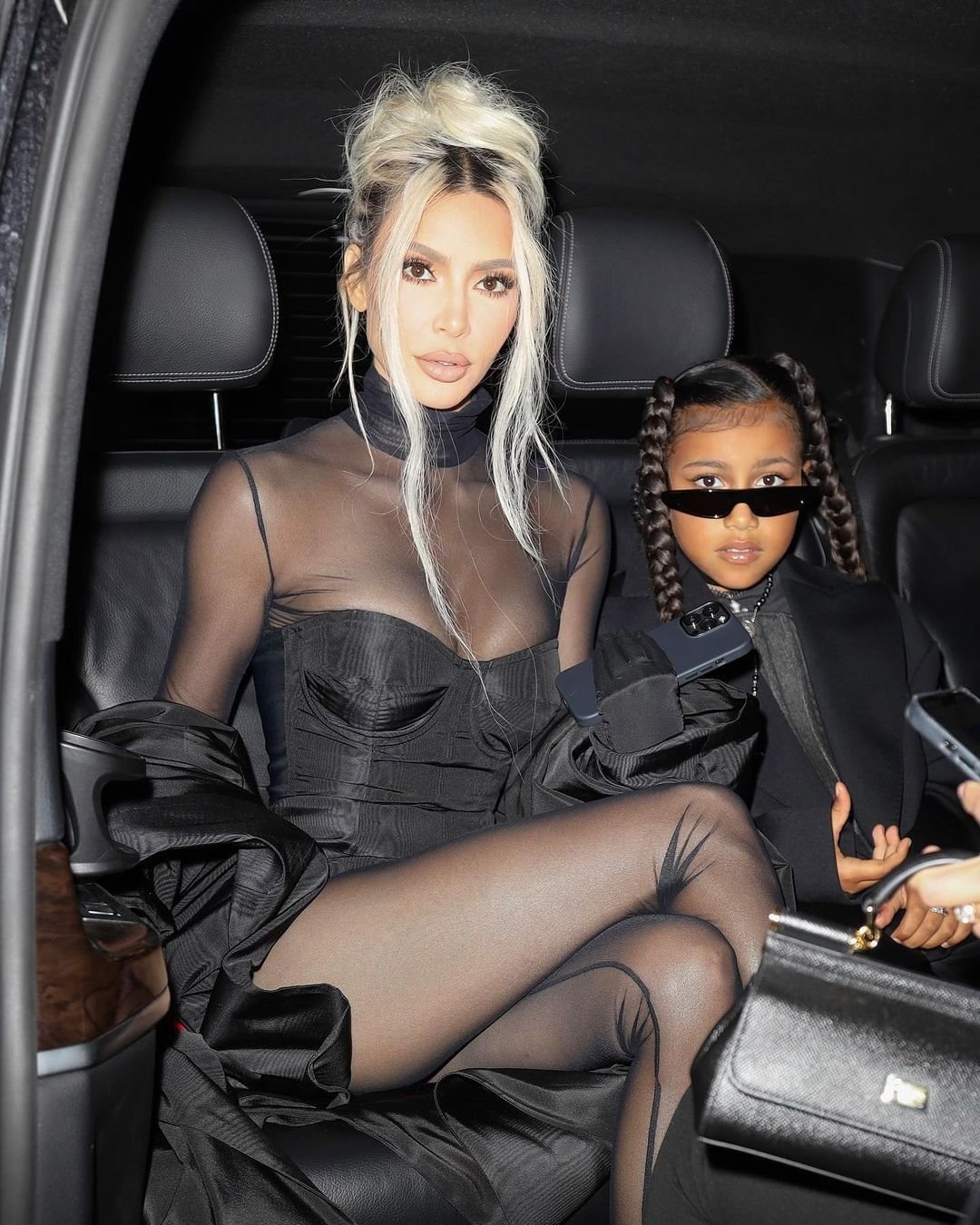Haute couture has long existed at the intersection of art, culture, and innovation.
While ready-to-wear collections serve the broader market, couture is the medium through which designers articulate bold visions, often pushing the boundaries of what fashion can express.
Over the decades, certain couture garments have become emblematic of turning points in both fashion history and societal evolution. These dresses—infused with vision, symbolism, and exceptional craftsmanship—transcended their temporal role and became enduring cultural references. From artistic collaborations to powerful political commentary embedded in seams and silhouettes, these garments have etched themselves into collective memory.
Christian Dior’s “Bar Suit”: The Birth of Modern Couture
When Christian Dior unveiled his first collection in 1947, it redefined femininity in the aftermath of World War II. The “Bar Suit”, a two-piece ensemble composed of a nipped-in waist jacket and a voluminous, pleated skirt, was not merely a design but a manifesto. It represented a sharp departure from wartime austerity and utilitarian fashion, ushering in an era of opulence, structure, and overt femininity.
Critics initially debated its excessiveness, given the recent fabric rationing and economic strain. Yet, the public quickly embraced the elegance and grandeur of the silhouette, christening the line the “New Look”. This moment marked a turning point where haute couture resumed its role as a cultural beacon, influencing not only future fashion trends but also post-war ideals of beauty and prosperity. The “Bar Suit” continues to inspire contemporary reinterpretations, a testament to its timeless significance.
Schiaparelli and Surrealism: Fashion as a Canvas for the Imagination
Elsa Schiaparelli’s designs frequently fused fashion with fine art, most notably through her collaborations with surrealist artist Salvador Dalí. Among her most striking creations is the “Lobster Dress” of 1937. A white silk organza gown with a giant painted lobster, it playfully juxtaposed the elegance of couture with the absurdity of surrealism. The lobster, a Dalí motif, became an unexpected but memorable feature, demonstrating that couture could provoke, amuse, and challenge the norms of taste and decorum.
Just one year later, Schiaparelli introduced the “Skeleton Dress”—an anatomical marvel. Featuring quilted elements resembling human ribs and a spine, the dress was at once haunting and intellectual. It explored the idea of mortality and the human body as fashion’s foundational canvas. These pieces were not designed merely to clothe but to make a statement about reality, perception, and the often arbitrary boundaries of beauty.
The 1960s Revolution: Yves Saint Laurent’s Visual Manifestos
As the social revolutions of the 1960s accelerated, so too did the pace of transformation in fashion. Yves Saint Laurent stood at the forefront of this change. His “Mondrian Dress”, released in the autumn/winter collection of 1965, distilled the essence of modern art into a wearable format. Inspired by the geometric abstractions of Piet Mondrian, the dress used bold black lines and blocks of primary color on a simple shift silhouette. It was minimalist yet assertive, signaling that couture could speak the language of contemporary culture with clarity and precision.
Another transformative work was Saint Laurent’s “Le Smoking Tuxedo”, introduced the following year. Traditionally masculine, the tuxedo was recast for women with tailored elegance and sensual subtlety. By placing women in evening suits, Saint Laurent challenged deeply entrenched gender norms and opened a conversation about power, femininity, and self-presentation. This was not just a design—it was a cultural repositioning, and it continues to influence how fashion negotiates issues of identity and authority.
The Evolution of Shape: Balenciaga’s Radical Forms
Cristóbal Balenciaga, known for his sculptural approach to design, took a daring turn with the Sack Dress in 1957. In stark contrast to the cinched waists of the “New Look,” Balenciaga proposed a silhouette devoid of definition. The dress hung freely from the shoulders, suggesting volume rather than structure. It bewildered critics at the time but gradually became appreciated for its architectural elegance and liberated aesthetic.
Balenciaga’s work highlighted the potential of haute couture to move beyond traditional notions of beauty. The Sack Dress did not merely reject conventional ideals—it proposed a new way of being, one that allowed for movement, ambiguity, and abstraction. Its legacy is felt in the works of modern designers who continue to explore fluid and unconventional silhouettes.
Provocation and Celebrity: Versace’s Signature Daring
By the 1990s, haute couture had become intrinsically linked with celebrity culture, red carpets, and media spectacle. Few garments embody this more than the black “Safety Pin Dress” designed by Gianni Versace and worn by Elizabeth Hurley in 1994. A strategic composition of cut-outs and oversized gold safety pins, the dress struck a perfect balance between elegance and provocation. It made headlines across the globe, turning Hurley into a household name overnight and cementing Versace’s reputation for fearless glamour.
Versace’s approach blended the classical heritage of Italian fashion with a forward-looking edge, often drawing on mythological and baroque references while embracing a contemporary sensuality. Later in the same decade, the appearance of the long Versace dress on runways and red carpets continued this narrative, favoring body-hugging lines and bold colors that celebrated the human form with unreserved flair.
Subversion and Spectacle: Gaultier’s Cone Corset
In 1990, Jean Paul Gaultier designed the “Cone Bra Corset” worn by Madonna during her “Blond Ambition” tour. Though technically crafted for a concert stage, the piece was made using couture techniques and materials. It blurred the lines between lingerie, outerwear, and performance costume, igniting debates about fashion’s role in expressing sexuality and power.
The corset reimagined historical undergarments as declarations of strength rather than instruments of restriction. It represented Gaultier’s hallmark approach—irreverent, imaginative, and rooted in deep respect for craftsmanship. This design helped normalize unconventional silhouettes and elevated the concept of costume as high fashion.
Cultural Continuity and the Future of Couture
Throughout fashion history, defining moments have often emerged when couture intersected with broader cultural movements—be it post-war optimism, surrealist exploration, feminist discourse, or media spectacle. While these garments were created for specific moments and often worn by singular individuals, their impact resonates far beyond their original contexts.
Today, the echoes of these iconic designs continue to influence emerging designers and the evolution of fashion. Digital technology, sustainability, and gender inclusivity are the new frontiers that today’s couturiers are exploring. Yet, the principles behind those historic pieces—innovation, individuality, and meticulous craftsmanship—remain central.
Designers like Iris van Herpen, known for integrating 3D printing with traditional techniques, exemplify how couture continues to redefine itself. Similarly, the resurgence of interest in historical silhouettes—reimagined through modern lenses—reflects a broader societal desire to honor the past while reshaping the future.
These garments, from Dior’s structured elegance to Gaultier’s subversive symbolism, are not just about fabric and form. They are vessels of meaning, sewn with intention, and worn as declarations. Each dress a moment. Each moment, a shift.







